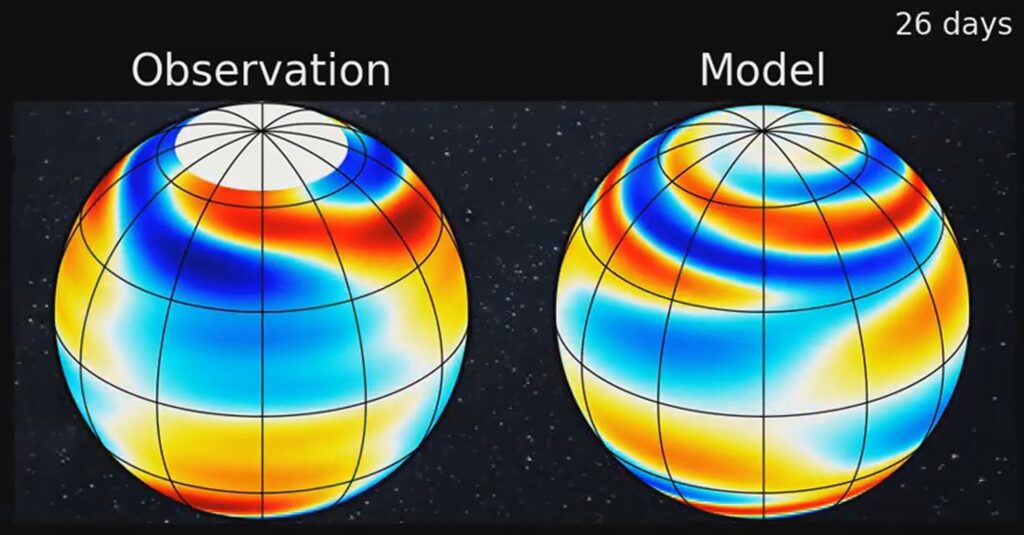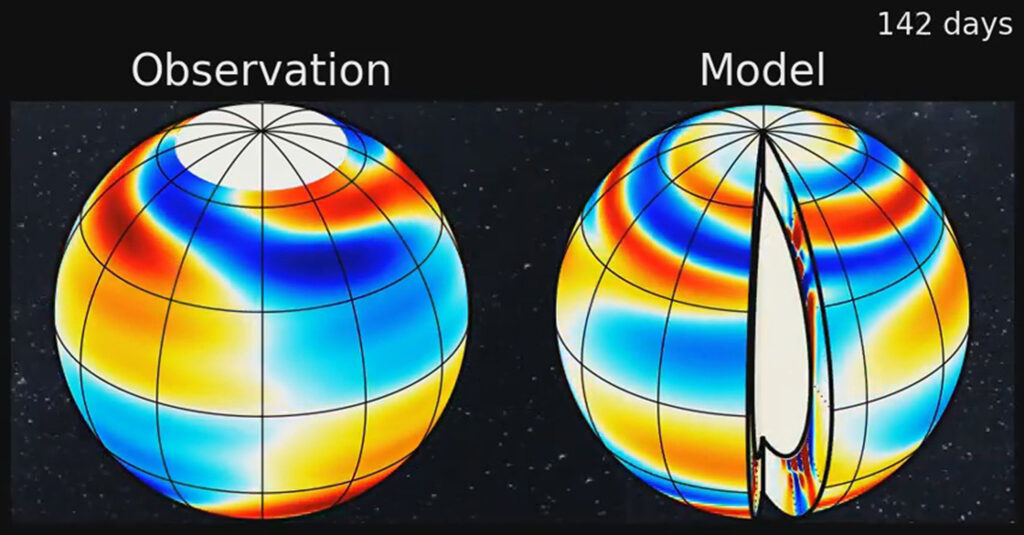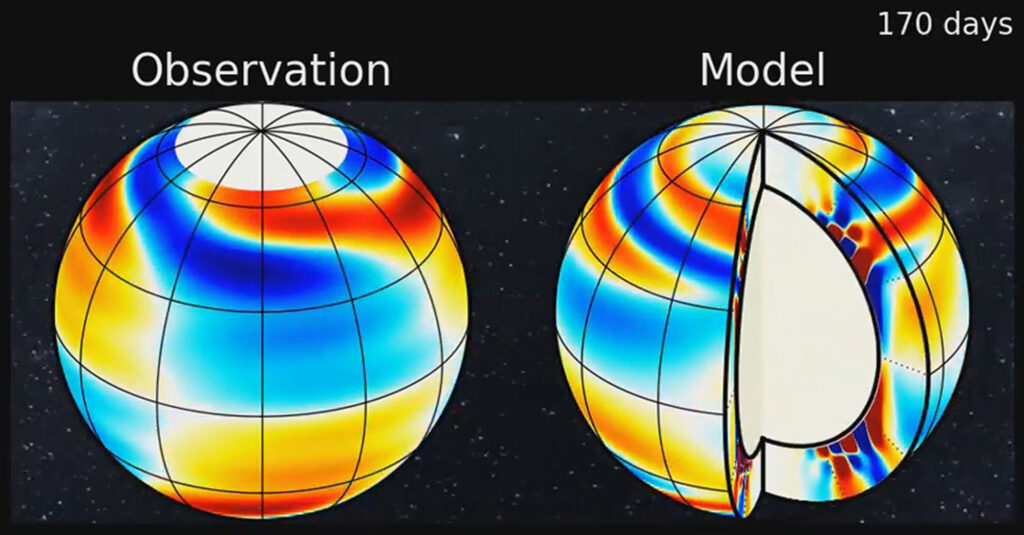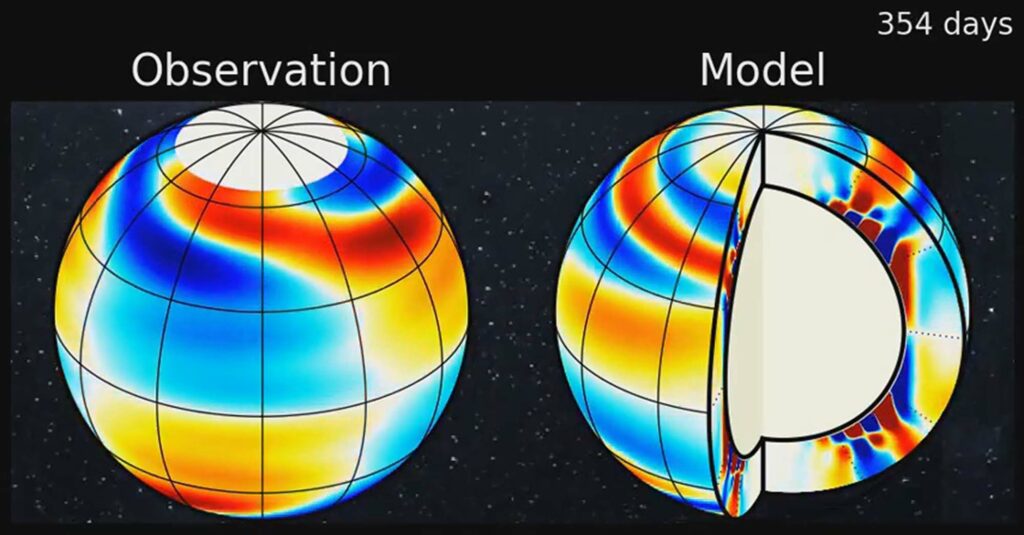Max Planck Boffins Discover Huge Waves In The Sun From NASA Missions
A team of researchers at the Max Planck Institute for Solar System Research and the German University of Goettingen has discovered global oscillations in the Sun using 10 years worth of NASA data.
In a statement released by the Max Planck Institute, researchers said that the oscillations seem linked to the sun’s own 27-day solar rotation period and that they “manifest themselves at the solar surface as swirling motions with speeds on the order of 5 kilometres per hour.”
They said that they had made the discovery after using 10 years worth of NASA observations from their Solar Dynamics Observatory (SDO).

Thanks to computer models, scientists revealed that these oscillations are “resonant modes”, which means that they exist because different parts of the sun rotate at different speeds in a phenomenon called “differential rotation”.
In what they termed “the Sun’s high musical notes”, they said that they had first been observed in the 1960s, adding: “The Sun rings like a bell”.
The statement from the Max Planck Institute also said that “millions of modes of acoustic oscillations with short periods, near 5 minutes, are excited by convective turbulence near the solar surface and are trapped in the solar interior.

“These 5-minute oscillations have been observed continuously by ground-based telescopes and space observatories since the mid 1990s and have been used very successfully by helioseismologists to learn about the internal structure and dynamics of our star – just like seismologists learn about the interior of the Earth by studying earthquakes.
“One of the triumphs of helioseismology is to have mapped the Sun’s rotation as a function of depth and latitude (the solar differential rotation).”
In order to work out why these oscillations occur, the team compared “the observational data to computer models”.

Graduate student Yuto Bekki explained: “The models allow us to look inside the Sun’s interior and determine the full three-dimensional structure of the oscillations.”
Max Planck scientist Damien Fournier said: “All of these new oscillations we observe on the Sun are strongly affected by the Sun’s differential rotation.”
Robert Cameron, also from the Max Planck Institute, added: “The oscillations are also sensitive to properties of the Sun’s interior: in particular to the strength of the turbulent motions and the related viscosity of the solar medium, as well as to the strength of the convective driving.”

The researcher who led the project, Laurent Gizon, said: “The discovery of a new type of solar oscillations is very exciting because it allows us to infer properties, such as the strength of the convective driving, which ultimately control the solar dynamo.”



